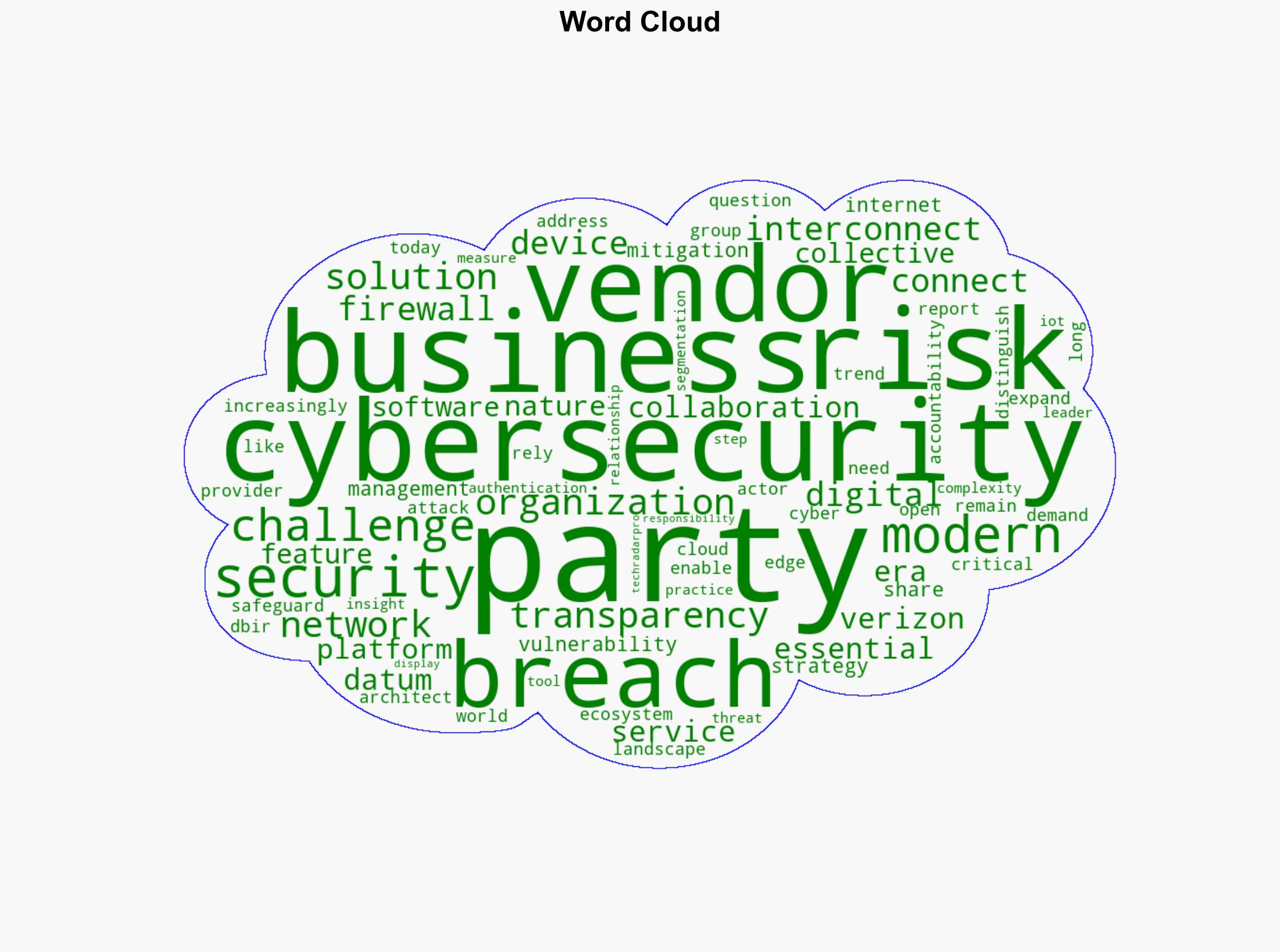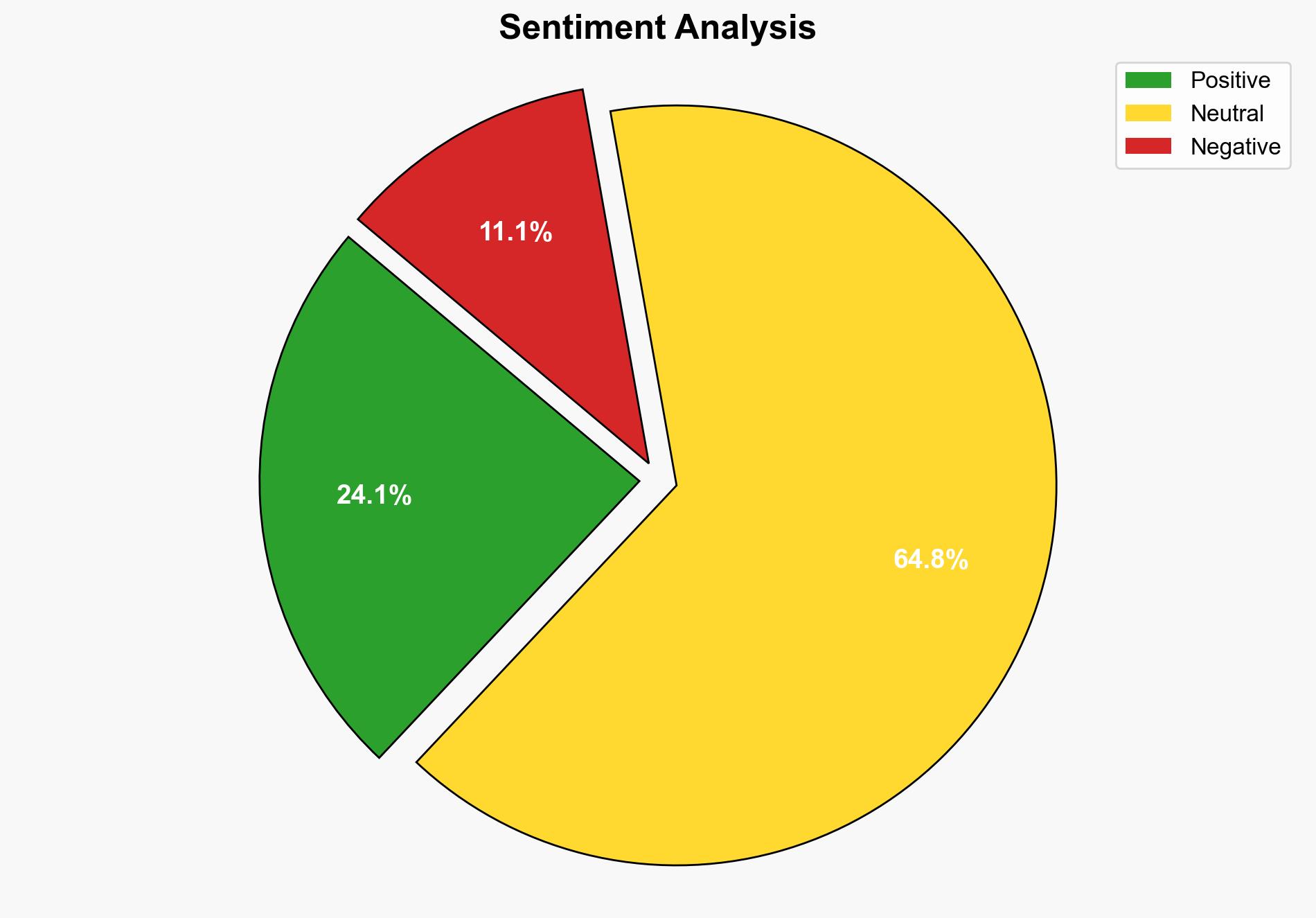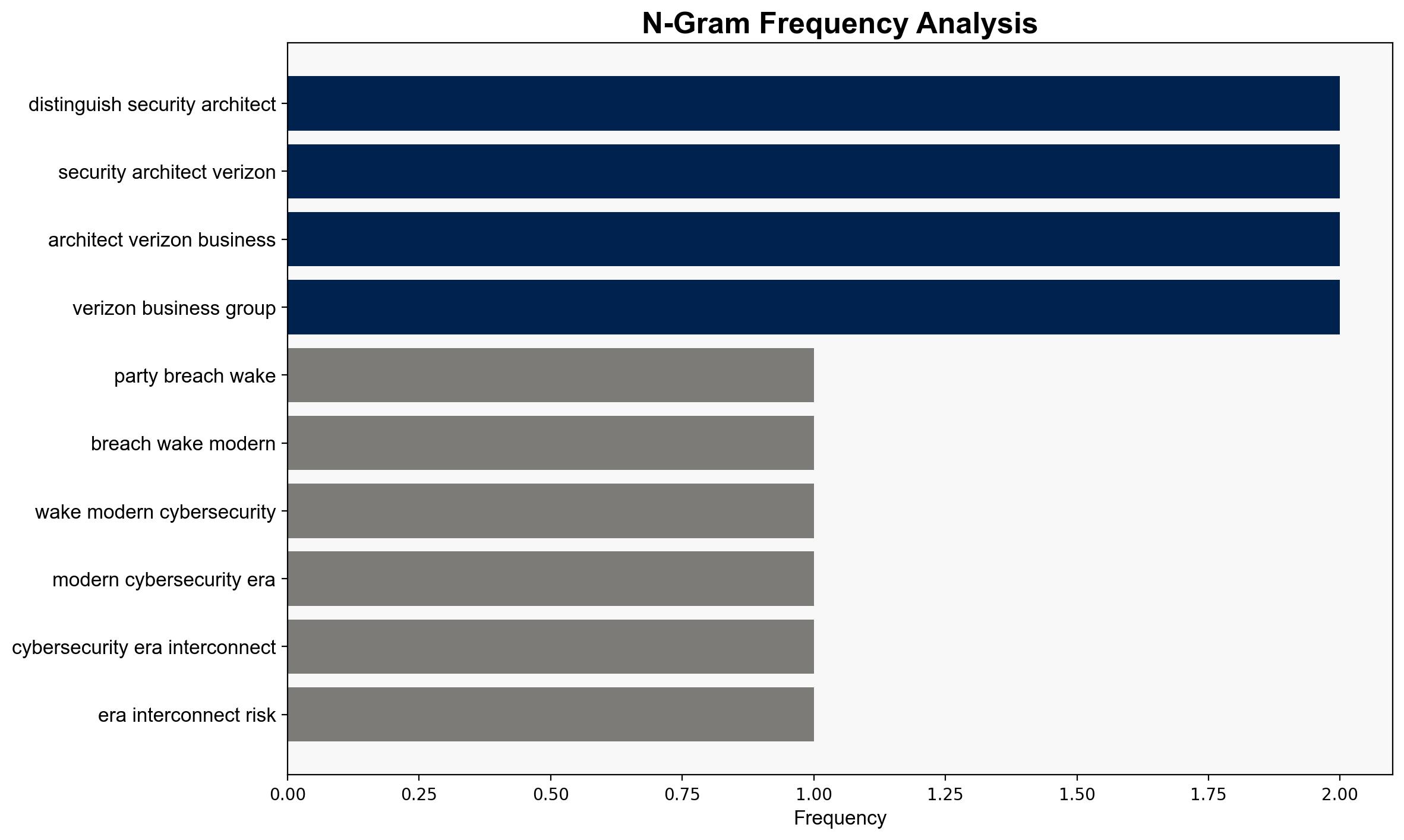Third-party breaches are a wake-up call for modern cybersecurity – TechRadar
Published on: 2025-10-08
Intelligence Report: Third-party breaches are a wake-up call for modern cybersecurity – TechRadar
1. BLUF (Bottom Line Up Front)
The most supported hypothesis is that the increasing reliance on third-party vendors significantly expands the attack surface, necessitating a strategic shift in cybersecurity practices. Confidence Level: High. Recommended action is to enhance third-party risk management and integrate advanced security measures tailored to specific vendor relationships.
2. Competing Hypotheses
Hypothesis 1: The rise in third-party breaches is primarily due to inadequate security measures by vendors, which are not keeping pace with evolving threats. This suggests a need for vendors to improve their cybersecurity frameworks and for businesses to enforce stricter compliance and oversight.
Hypothesis 2: The increase in breaches is a result of the inherent complexity and interconnectivity of modern digital ecosystems, which makes traditional security measures like firewalls and VPNs less effective. This implies a need for businesses to adopt more holistic and adaptive cybersecurity strategies that account for the expanded attack surface.
3. Key Assumptions and Red Flags
Assumptions:
– Vendors are not uniformly implementing robust security measures.
– Businesses have the capability to enforce compliance and oversight effectively.
– Traditional security measures are becoming obsolete in the face of new threats.
Red Flags:
– Lack of specific data on vendor compliance levels.
– Potential bias in assuming all vendors are equally vulnerable.
– Over-reliance on traditional security measures without considering innovative solutions.
4. Implications and Strategic Risks
The increasing frequency of third-party breaches poses significant risks, including economic losses, reputational damage, and potential geopolitical tensions if state actors exploit these vulnerabilities. The interconnected nature of digital ecosystems means that a breach in one area can have cascading effects, potentially leading to widespread disruptions.
5. Recommendations and Outlook
- Enhance third-party risk management by conducting regular security audits and enforcing compliance with cybersecurity standards.
- Adopt a zero-trust architecture to minimize the impact of potential breaches.
- Invest in advanced threat detection and response capabilities to quickly identify and mitigate breaches.
- Scenario Projections:
- Best Case: Businesses successfully implement robust third-party risk management, reducing breach incidents.
- Worst Case: Continued breaches lead to severe economic and reputational damage, with potential geopolitical ramifications.
- Most Likely: Incremental improvements in security measures lead to a gradual reduction in breach incidents.
6. Key Individuals and Entities
No specific individuals are mentioned in the source text. Entities include Verizon and TechRadar as sources of the report and analysis.
7. Thematic Tags
national security threats, cybersecurity, third-party risk management, digital ecosystem, vendor compliance





